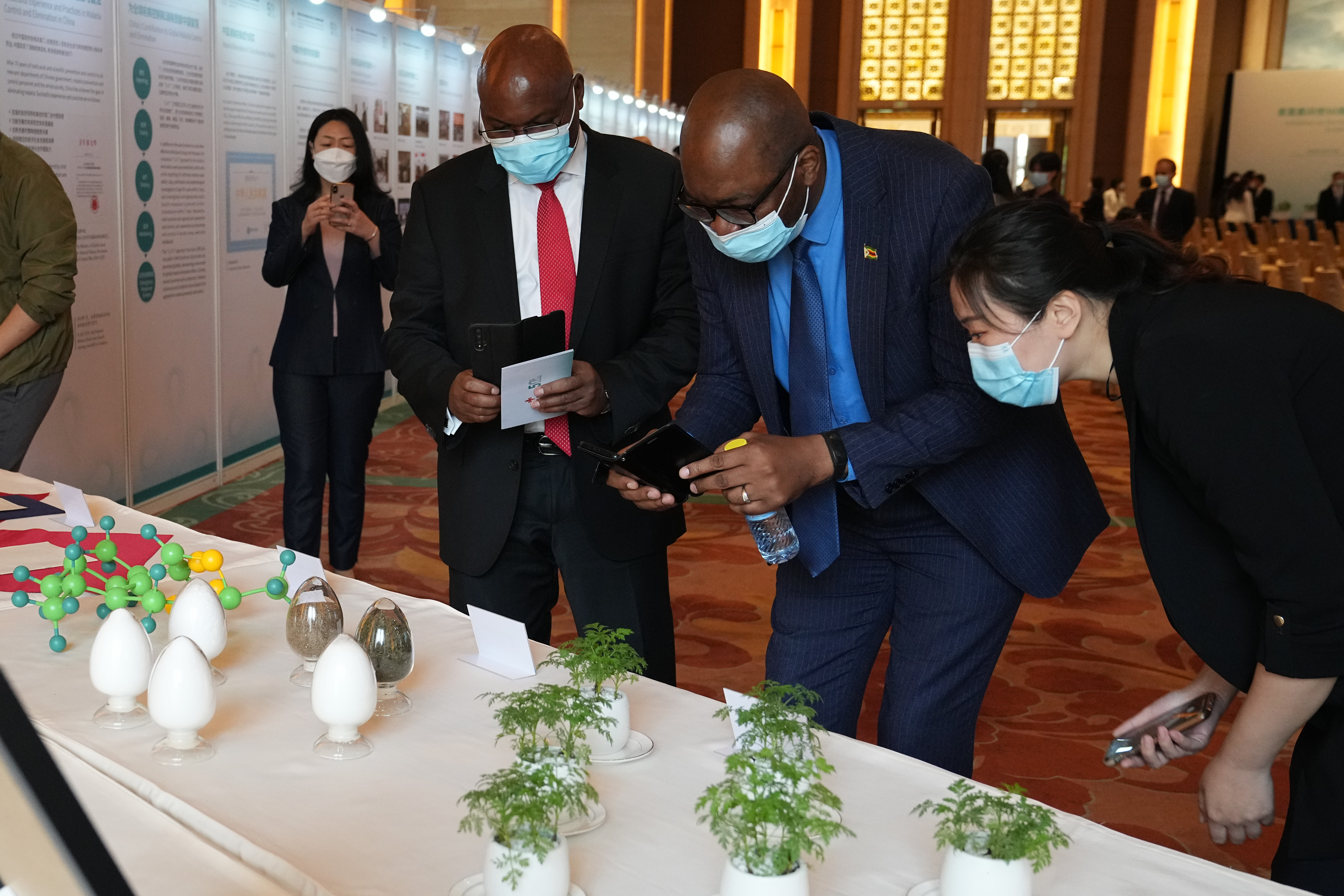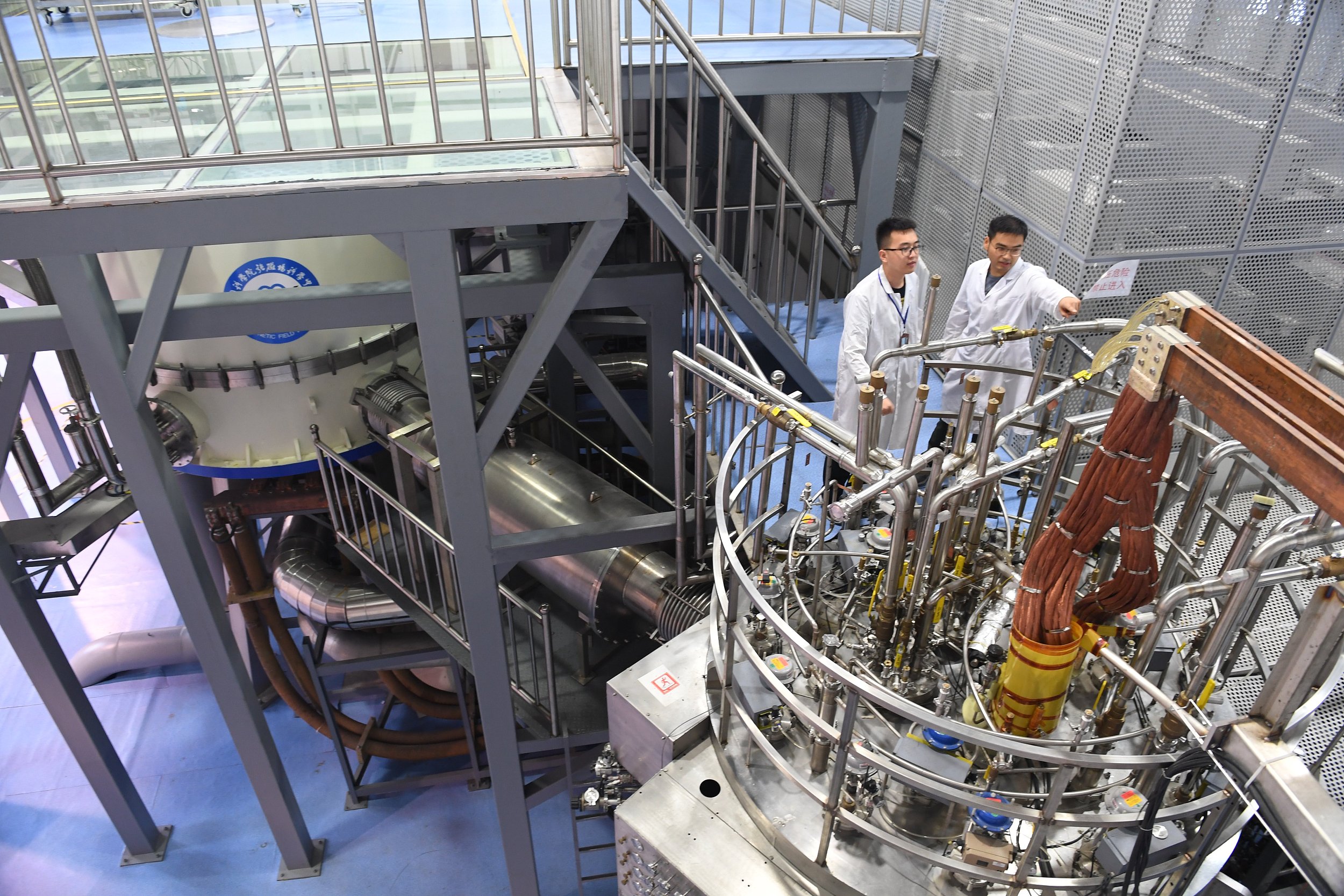50 Years On, TCM Curing Malaria Worldwide

Participants of the International Forum on the 50th Anniversary of the Discovery of Artemisinin stop by an artemisinin exhibition in Beijing. (PHOTO: VCG)
By ZHONG Jianli and FU Lili
This year marks the 50th anniversary of the discovery of artemisinin by Chinese Nobel Laureate Tu Youyou and her team. They extracted artemisinin from qinghao, a kind of traditional Chinese medicinal herb, bringing a new cure for malaria and saving millions of lives worldwide.
Thanks to the magical herb, China has seen no malaria cases since 2017, and the country was officially certified malaria-free by the WHO in June 2021.
Chinese scientists have, however, continued to research artemisinin, as there are still 91 malaria endemic countries and regions in the world, most being in sub-Saharan Africa.
"What we've been working on is figuring out how artemisinin works, decoding its resistance, and expanding the usage of artemisinin-based drugs," Liao Fulong, Tu's colleague and a researcher at Institute of Chinese Materia Medica of China Academy of Chinese Medical Sciences (CACMS), told Science and Technology Daily recently.
Now, the research on the mechanism of artemisinin has made progress. Wang Jigang, a member of the research team at Artemisinin Research Center of CACMS, adopted the chemical biology method and found that the mechanism is a multi-target pattern. In other words, the heme activates the artemisinin, and the artemisinin kills the plasmodium.
This heme-activated multi-target theory has been recognized by the international antimalarial community, which is of great significance for revealing the deep mechanism of antimalarial resistance of artemisinin and promoting more effective clinical medication.
Liao's team is also interested in artemisinin's anti-cancer and other effects. The anti-cancer mechanism of artemisinin is similar to that of anti-malaria. But artemisinin's anti-cancer efficacy is still in the basic research stage, and whether it can be used as an anti-cancer drug needs more follow-up research.
Other progress made by the team is on using artemisinin-based drugs to treat lupus erythematosus. Dihydroartemisinin has a unique effect on the treatment of lupus erythematosus with high variability. "A phase II clinical trial is currently underway at the KPC Pharmaceuticals, Inc., and relevant results are expected to be revealed in September this year," said Liao.
The discovery and application of artemisinin is a success story of humankind's arduous struggle against diseases. It is also an example of China's commitment to benefiting the world through its development and building a global community of health for all.
By the end of 2021, China had provided billions of units of artemisinin drugs to malaria patients worldwide, trained tens of thousands of antimalarial technicians from developing countries, built malaria prevention and control centers for 30 countries, and sent 28,000 medical workers to 72 developing countries for malaria prevention and treatment, according to Wang Wenbin, spokesperson of the Ministry of Foreign Affairs.


